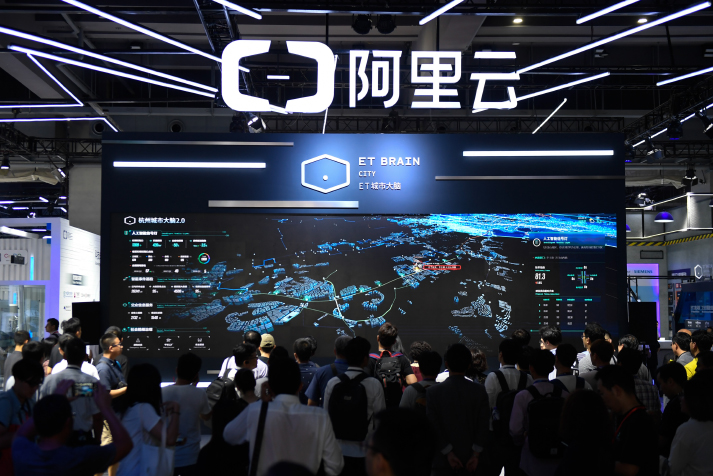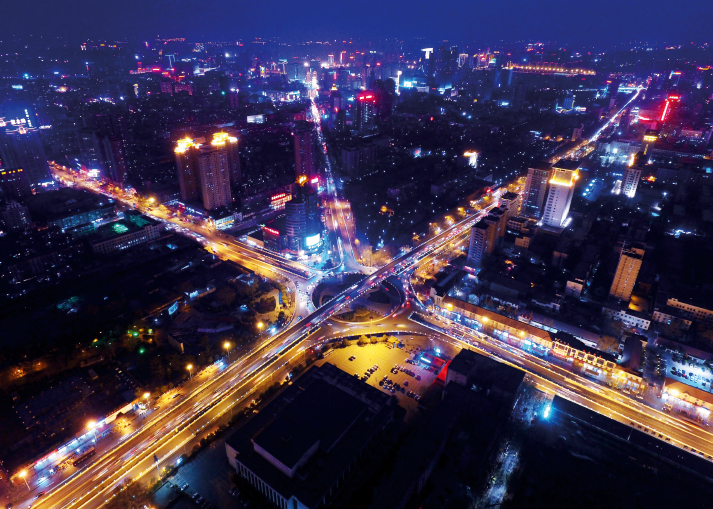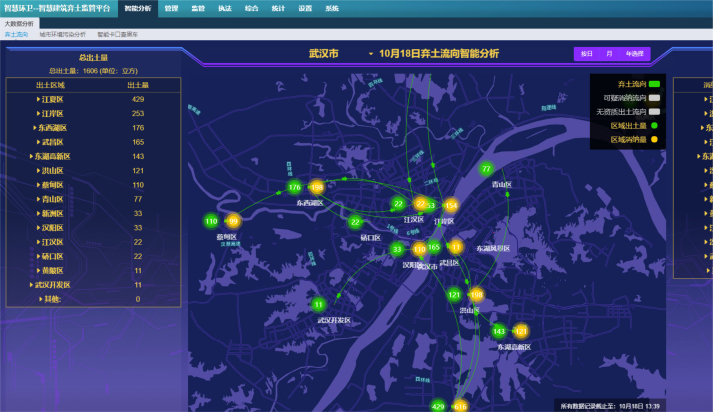|
||||||||||
| Home Nation World Business Opinion Lifestyle ChinAfrica Multimedia Columnists Documents Special Reports |
|
||||||||||
| Home Nation World Business Opinion Lifestyle ChinAfrica Multimedia Columnists Documents Special Reports |
| ChinAfrica |
| Free Flowing Traffic |
| China's urban traffic management employs smart technology for a smoother ride |
| By Li Xiaoyu | VOL.11 December ·2019-12-06 |

The City Brain platform jointly launched by the Hangzhou Government and Alibaba Group helps to bring new solutions to problem in city development (XINHUA)
Ambulances in Hangzhou City, east China's Zhejiang Province, are super efficient. They can transport a patient to hospital from any given point in half the standard time. How, you may ask. Are their vehicles faster? Or have ambulance drivers received the same training as Formula One pilots? Actually, the reason is all to do with "smart transportation."
At the end of 2016, the Hangzhou Government launched a project, in collaboration with Alibaba Cloud, a Chinese cloud computing company and subsidiary of the Alibaba Group, to equip the city with a nerve center capable of processing data, called City Brain. In case of emergencies, City Brain builds various algorithmic models before the departure of the emergency services. It is then able to design the best route with the reference data (speed, number and route of vehicles in the city) provided by the sensors. It should be noted that this solution does not merely require drivers to give way to priority vehicles. It aims at the best use of road resources without disturbing the daily traffic flow.
As revealed by the efficiency of Hangzhou's ambulances, application of new technologies, such as big data and artificial intelligence (AI), now allows cities to bring new solutions to identified problems in urban mobility, such as congestion, among others.

Traffic flow in Zhengzhou, central China's Henan Province (XINHUA)
Stream optimization
Urban mobility is a major issue for cities whose growth increases the congestion of roads. Hangzhou decreased from the fifth most congested city in 2016 to the 57th in 2018, among the most congested cities in China. It must be said that City Brain plays an indispensable role in the city's fight against traffic jams.
"A city with a brain is supposed to learn by itself," said Min Wanli, chief economist for AI at Alibaba Cloud, adding that the functioning of City Brain is similar to that of the human brain. The difference is that human brain processes information from the senses such as sight and hearing, while City Brain processes data collected by surveillance cameras.
The effectiveness of City Brain relies on the billions of bits of data collected on the management of urban transport. "Viewing all these videos would require some 150,000 police officers to work 24/7. But City Brain can do it in a short time," said Min.
With this data, City Brain can create an algorithmic model in a virtual digital city and offer smarter solutions through machine learning. It allows drivers, for example, to better know at which intersections to turn left or right, to adapt to the frequencies and routes of the buses and other public transport. "It saves us from relying solely on the human experience, which is often unreliable and fragmented in urban management," said Min.
An example of City Brain in action stands at the AI-controlled traffic lights at the entrance of Hangzhou Expressway. Thanks to the sensors, City Brain can detect traffic conditions on roads and control traffic lights. With self-assessment and self-regulation done every two minutes, the AI tries to find the optimal solution to smoothing the traffic flow. Today, it controls 50 percent of the traffic lights at the entrance to expressways in Hangzhou. The fluidity of traffic has increased by 15.3 percent and the speed of traffic flow can remain up to 50 km/h.

A smart platform to monitor city environment and sanitation developed by Exsun Electronic Information Technology, a Wuhan-based company (COURTESY PHOTO)
Rational management
Besides congestion, violations of traffic regulations are also among the priority concerns of traffic police. Damage to pavements from overloaded gravel trucks, for example, is often criticized by the public for causing fatal accidents. As early as 2016, Wuhan, capital of central China's Hubei Province, developed the first gravel truck monitoring system in China. Using technologies like the Internet of Things and big data, it is now easy to determine where trucks are, and where to stop and unload their gravel.
Behind this process is Exsun Electronic Information Technology, a Wuhan-based satellite positioning system manufacturer. Its chairman, Fu Cheng, told ChinAfrica that the intelligence of this system is based on the three sensors installed on the truck. These can respectively check if the vehicle exceeds the height and weight limit and if it is well sealed.
At the other end of the system, every 10 seconds a cloud server receives the data sent by the sensors that monitor the truck throughout its journey. Thanks to the data collected, police officers can easily detect offenses in their office without having to pick up and arrest offenders in the street. For example, if a truck has not yet arrived at a designated place and its weight is suddenly decreasing, it is easy to understand that the driver has dropped off part of his load somewhere. If so, this data can be used as evidence to punish offenders. According to statistics published by the Wuhan Traffic Management Bureau, since the launch of this system, no deaths related to gravel trucks have been recorded.
"The development of urban infrastructure is limited and we may not always be able to build wider roads. But the use of new technologies can enable us to make the most of our existing resources and provide innovative solutions to the problems facing humans," said Min.
(Comments to lixiaoyu@chinafrica.cn)
|
||||||||||||
| About Us | Contact Us | Advertise with Us | Subscribe |
| Copyright Beijing Review All rights reserved 京ICP备08005356号-5 京公网安备110102005860号 |